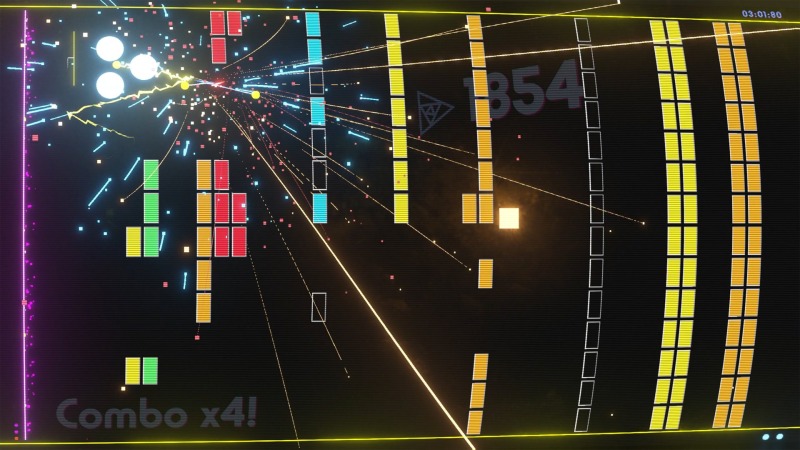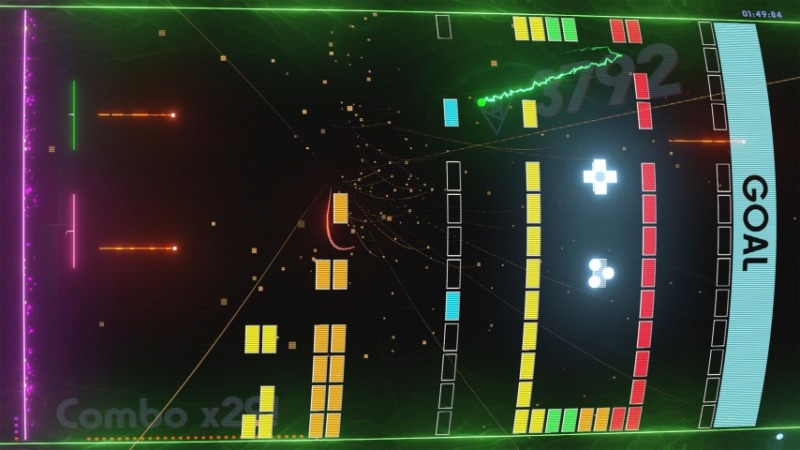Don’t Bounce Off Breakout Beyond, Another Smart Update by Atari

I have been terrible at Breakout longer than I have been bad (or good) at any other videogame. And trust me: I have been bad at videogames for a very long time. Breakout is something special, though, the first game I ever remember playing, and one I have never, at any point in my life, in any of its various permutations, been the slightest bit good at. It doesn’t matter what you call it—Breakout, Super Breakout, Arkanoid, Alleyway—if the game’s about bouncing a ball off a bar and against brick walls, I will be terrible at it. It was true whenever I first played Breakout back when I was barely old enough to form memories, and it’s true today, as I struggle through the brand new (and almost brilliant) Breakout Beyond.
Breakout Beyond is the latest in a string of smart updates of classic Atari games from the current owners of the company, and it’s a much bigger departure from the original formula than 2022’s fine Breakout: Recharged. It’s still about keeping a ball alive as it caroms between your paddle and a wall of breakable bricks, but instead of trying to clear the entire screen the end goal is getting that ball across a finish line buried behind all those bricks. There’s theoretically an ideal route through every stage, a minimum number of bricks that have to be eliminated in order to reach that finish line, and the game encourages that kind of speed by putting every stage on a time limit. You start with three balls per stage, and if you don’t get to the end before that time limit expires or those balls are gone, you lose.
That’s a pretty significant change for Breakout, structurally. Another change is obvious the very first time you look at Breakout Beyond: instead of a vertical orientation, with your bar at the bottom of the screen and the bricks at the top, everything’s horizontal, with the bar at the left end of the screen—like you’ve put the whole game on its side. And almost every stage is larger than a single screen; it slowly scrolls to the right as you break through the first cluster of bricks, with your bar becoming momentarily stunned if it ever touches any bricks that you weren’t able to clear from the field. So you will regularly find yourself in a position halfway through a stage where a brick is in the way of your bar, preventing you from reaching the upper or lower part of the screen on your far-left perch, until the screen has scrolled past it. This Breakout is bigger, longer, with more ways to be punished—and, yes, less elegant, but given it’s been almost 50 years since this game was created, it’s probably okay to add new complications into the mix.
Although a ball is your primary weapon in Breakout Beyond, there is a range of Arkanoid-style power-ups that can be collected by hitting specially marked bricks. One of them adds a temporary wall beyond your bar, saving all your balls for a short time. Another multiplies your ball by three, letting you blast through bricks in a hurry if you’re able to keep them all in play. One more causes a cross-shaped explosion that clears two whole lines of bricks, and there’s also one that temporarily fires bullets from your bar, destroying any brick they hit. A cross-shaped power-up gives you an extra ball. The game doles these out throughout the early stages, sprinkling them in one by one before mixing and matching them liberally thereafter; when some of them combine—like, say, the multiball and the wall—it can cause true chaos, with balls flying in every direction, quickly destroying any fortress of bricks. (It gets even more chaotic if you trigger more than one multiball power-up at a time.) There are some stages that seem to require that kind of interaction—that seem unbeatable if you don’t trigger more than one power-up at a time.
These power-ups can make lightning-fast work of a stage, so obviously the game needs to start adding in ways to undermine them. Eventually stages will have bricks that need to be hit multiple times to destroy, or special blocks that instantly fast forwards through a chunk of the stage—-with whatever bricks you haven’t broken yet now cluttering up the limited, up-and-down path of your bar. The most frustrating version of Breakout Beyond are those levels made up almost entirely of bricks that need to be hit more than once, where the only way to succeed requires hitting a specific power-up within a certain amount of time and hoping you keep the ball(s) alive long enough to break through enough of those bricks. That requires precise aiming, which has always been my downfall with Breakout, and why it’s vexed me like no other game for as long as it has.
I don’t know if you need to be good at math, or shooting pool, or what (that’s geometry, right? but not the kind with the annoying proofs?), but my fatal flaw with Breakout Beyond is that I am absolutely terrible at guiding the ball. It moves in a clear trajectory depending on what part of the bar it bounces off of, but between the changing speed of the ball and the twitchiness of moving the bar I’ve never been able to internalize the specific formula behind it all. I can aim the ball in a specific direction with some reliability and consistency when I’m first launching it off the bar, but once it’s in play it takes everything I have just to keep it alive. Strategy isn’t much of an option when survival itself is a struggle. And so those stages where every brick needs to be hit three times, and where there simply isn’t enough time to do that without hitting a very specific power-up or fast forward brick early on, are pure crap shoots for me. I am worse at Breakout Beyond the more I try to aim, and so on those stages I just try to keep the ball alive as long as possible and hope against hope that I hit the one block I need to hit to have any chance of making it through. And no, that is not particularly fun, or interesting, or entertaining.

There’s also the issue of not being able to play Breakout Beyond with a paddle controller. Traditionally you’d play Breakout with what is essentially a dial that you twist left to right to move the on-screen paddle. It’s the ideal interface for this kind of game, but it’s 2025 and you’ll almost definitely be playing Breakout Beyond with a console controller or your computer keyboard. I played it on the PlayStation 5, and moving the bar with an analogue thumbstick isn’t as precise or effortless as the old 2600 paddle. Beyond tries to compensate for that by letting you speed up the paddle with a button, or entering into “focus” mode, which slows down everything on screen (but not the clock ticking down the time limit). Joysticks and D-pads have never worked well with this kind of game (that’s one reason Nintendo’s Alleyway, a launch title for the original Game Boy, is forgotten and unloved), and although the ability to speed up or slow down helps restore some of the loss of feeling, it still can’t match playing with a paddle.